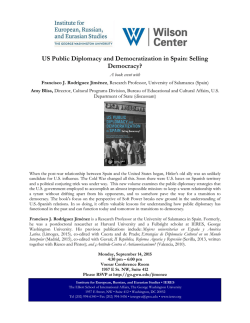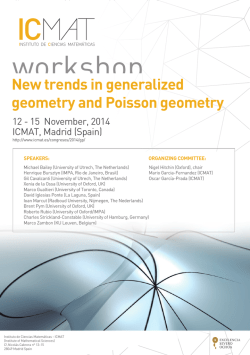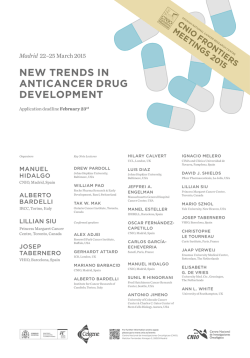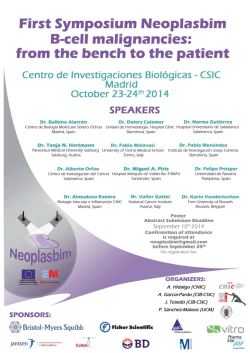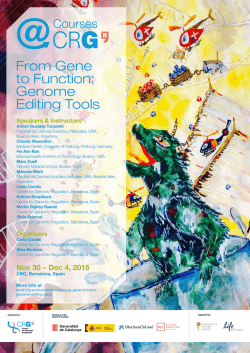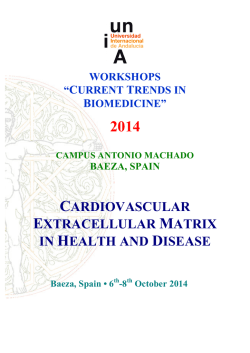
Migration and Health in Spain
POLICY BRIEF Migration and Health in Spain CIBERESP Subprogram on Migration and Health Introduction In the past two decades, Spain has become an important destina tion for migrants. There is currently no universally accepted defini tion for "migrant". Migrants are considered to be economic migrants, temporary workers, retirees, asylum seekers, trafficked people, refugees, international students, expatriate executives, and anyone living outside of their country of birth. Profile of the Immigrant Population in Spain Immigrants make up over 10% of the resident population in Spain, and it has become a major immigration country in Europe. The top (nonEU) immigrant groups in Spain are 1) Moroccans (714,221), 2) Ecuadorians (212,970), 3) Colombians (172,368), Chinese (164,555), Bulgarians (140,206), and Bolivians (126,421) (1). The re are an estimated 600,000 undocumented immigrants in Spain (2), one of the highest rates in the EU, despite favorable proces ses for regularization, naturalization and family reunification (3). In Spain, economic migrants are the group that has received the most attention from a policy and research perspective. Challenges of Migration for Health Systems The Right to Health for migrants Since 1948 health has been a human right declared by the United Nations. Maastricht Treaty – encouraged member states to provide a high level of health protection. Portuguese EU Presidency of 2007 prioritized migrant he alth. Bratislava Declaration on Health, Human Rights and Migrati on highlighted challenges in providing care. 61st World Health Assembly in 2008, WHO member states called to support migrant health via policy, dialogue, and health system strengthening. EU Health Strategy 20082013 supported migrant health in health promotion, prevention and access to care. EU Framework Program called for coordination of research to address inequalities in the social determinants of health. In 2010 the Spanish Presidency and WHO hosted the Glo bal Consultation on Migration and Health. People who migrate are healthy contributors to society, but the ex perience of migration impacts health on multiple levels, in terms of entitlements to health, access to health care, risk of infectious diseases and chronic conditions, exposure to poor working and li The SMH highlights the health situation of immigrants in Spain: ving conditions, and levels of income. Immigrants tend to face barriers to using health services due to legal and administrative is Access to Care and Health Service Use sues, discrimination or mistreatment, linguistic differences, unfa In general, the immigrant population in Spain is healthy, with miliarity with the health system, and cultural health beliefs or health needs that are similar to the native population. practices. Also, health systems and health providers often lack the Spain's severe economic crisis has significantly impacted tools necessary to engage immigrant populations in health promo immigrants’ health and wellbeing through a move away tion, education, prevention and treatment services (4). Despite from equity and cuts in health service provision. these challenges, EU member states and health systems must support immigrants’ right to health. Immigrants' use of primary care services is similar to the na tive born population, with greater use of emergency servi Immigrant Health in Spain. Key findings ces and underuse of secondary care. The following scientific contribution made by the research groups participating on the Subprogram on Migration and Health (SMH) in Spain has been identified and analyzed: • Around 234 articles published in scientific journals, Disparities in health service use may be related to lack of fa miliarity with the health system, doctorpatient communi cation issues, or differences in risk perception and health seeking behaviors. • 37 active or completed projects (including 11 international pro jects), and Occupational Health • High levels of participation in scientific conferences, meetings, and working groups (27). • Four immigrant cohort studies completed or underway among Subprogram members, representing a highly valuable body of research that offers knowledge on key focus areas. Immigrants are disproportionately employed in jobs in the construction, agriculture and hotel and domestic services sectors. These sectors pay low wages and imply greater exposure to workrelated risks; they were also among the sectors most affected by the economic crisis. Page 2 Migration and Health in Spain Chronic and Infectious Diseases Immigrants and natives tend to be similar in terms of the most prevalent chronic conditions, with better outcomes by some measures. Immigrants are more vulnerable to some infectious diseases including tuberculosis. Spain is among the countries with the highest prevalence of Chagas disease in Europe. There are challenges to screening and treatment including legal, administrative, cultural and linguistic barriers. Mental Health Factors that often accompany migrationespecially in preca rious circumstances or undocumented migration may gi ve rise to mental health problems. There is lower use of mental health services among immi grants, perhaps due to lack of access or lack of unders tanding of the immigrant’s culture on the part of the health professional, or quality of care that is not appropri ate to the needs of immigrants. Sexual and Reproductive Health Immigrant women may have a greater risk of negative out comes such as preterm birth and low birth weight and a relevant vulnerability to HIV/STI transmission Health System and Policy Recommendations to Impro ve Immigrant Health in Spain A wide body of SMH research evidence points to recommendati ons for improving immigrant health in Spain. Ensure entitlement, support equity, and reduce barri ers to health care Recommit to equity and universality as principles of the Na tional Health System; expand entitlements to health and social services to include all immigrant groups. Reduce barriers to access to care related to linguistic, cultu ral, economic, administrative or other issues. Design interventions that teach cultural competencies for health professionals and within health institutions. Tailor health programs to immigrant populations and promote health service use Engage in program adaptation for certain immigrant sub groups that have worse health outcomes or are otherwise atrisk. Improve upon elements of Spanish regional immigration plans, including engaging in culturally relevant health pro motion and education, use of translators, cultural media tors and community health outreach workers, among others. Increase cooperation between social partners, immigrant associations and the public health administration. Promote awareness and increase detection of imported and infectious diseases in immigrant po pulations Implement systems, guides by national policy, for the mandatory reporting of infectious diseases. Develop programs to improve awareness of health professionals of emerging infectious diseases and those associated with human mobility. Identify and expand screening and treatment programs across Spain’s autonomous communities; ex: the cruzi vertical transmission program. Reduce the burden of chronic disease in immigrants and support good health status Support protective factors within the host and/or origin cul ture related to management of nutrition, physical activity, obesity and chronic pain. Make special provisions to extend these efforts to immi grants and vulnerable groups. Support proemployment and social protection polici es and occupational health Promote the health of those impacted by the economic cri sis; provide protections for the unemployed, those with low incomes and those in precarious work situations. Pay special attention to training of immigrant workers on la bor rights and risk prevention. Provide incentives to companies to comply with good labor conditions. Adopt inclusive policies and promote economic and political integration to improve immigrants' health Support access to mental health services and develop cultural competencies among mental health institu tions and providers Develop strategies for expanding mental health services available for immigrant groups. Develop institutional plans to provide training, education and strategies on cultural competency to all mental health professionals and services, relevant to Spain’s migrant profile. Utilize and expand on the expertise of transcultural mental health services. Conclusions Spanish demographics have changed dramatically in a short time period, provoking challenges in terms of social integration, but ne vertheless providing the opportunity to support good health of the population. The Spanish National Health System continues to be an asset in the provision of health protection to the great majority of the population, including immigrants, however, formal entitle ments, guidance and leadership are needed for the health sector in order to promote good health of a more diverse population. Page 3 Migration and Health in Spain About the Subprogram on Migration and Health (SMH) The SMH was created in 2011 by the Biomedical Research Cen ter Network for Epidemiology and Public Health (CIBERESP). The mission of the Subprogram is to monitor and improve know ledge about the health status of the immigrant population in Spain related to communicable and noncommunicable diseases, as well as the biological, behavioral and structural determinants of health. The SMH promotes collaboration and synergy among the Subprogram and other groups intra and inter CIBERESP. Through multidisciplinary collaboration, the Subprogram aims to coordinate research and knowledge translation activities to sup port evidencebased policy and practice with respect to immigrant health in Spain. SMH has contributed significantly to migrant health scientific lite rature, with substantial research in the following areas: Health status and access to health care Health service use and quality of care Health equity and the social determinants of health Occupational health Chronic and infectious diseases Sexual and reproductive health Mental health, and others This policy brief is a synthesis of a more exhaustive report prepared by Emily Felt, MPP, in coordination with Elena Ronda, Jordi Casabona, Cristina Hernando and Laia Ferrer from the SMH and the contribution of other groups participating on it to inform policies and programs to support immigrant health in Spain. References 1. Migration Statistics 2013. National Statistics Institute, Spain. 2. Picum. (2013). PICUM Submission to the UN Committee on the Protection of the Rights of All Migrant Workers and Members of their Families Day of General Discussion on the role of migration statistics for treaty reporting and migration policies, (April), 1–24. 3. Migration Policy Index (MIPEX) (2013). Available at: http://www.mipex.eu/spain, accessed July 29, 2015. 4. Rechel, B., Mladovsky, P., Devillé, W., Rijks, B., Petrova Benedict, R., & McKee, M. (Eds.). (2011). Migration and health in the European Union. European Observatory on Health Systems and Policies.
© Copyright 2025
